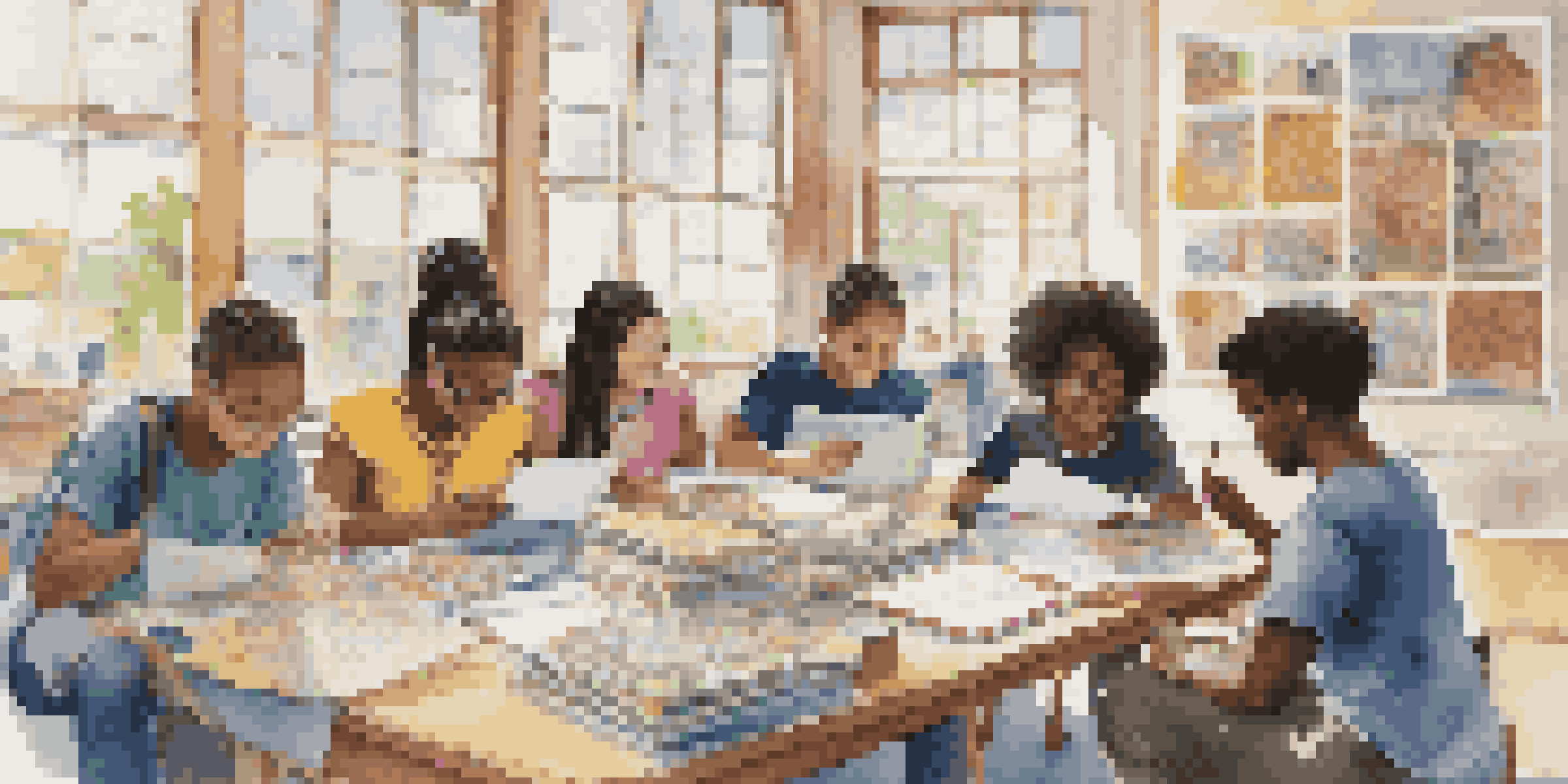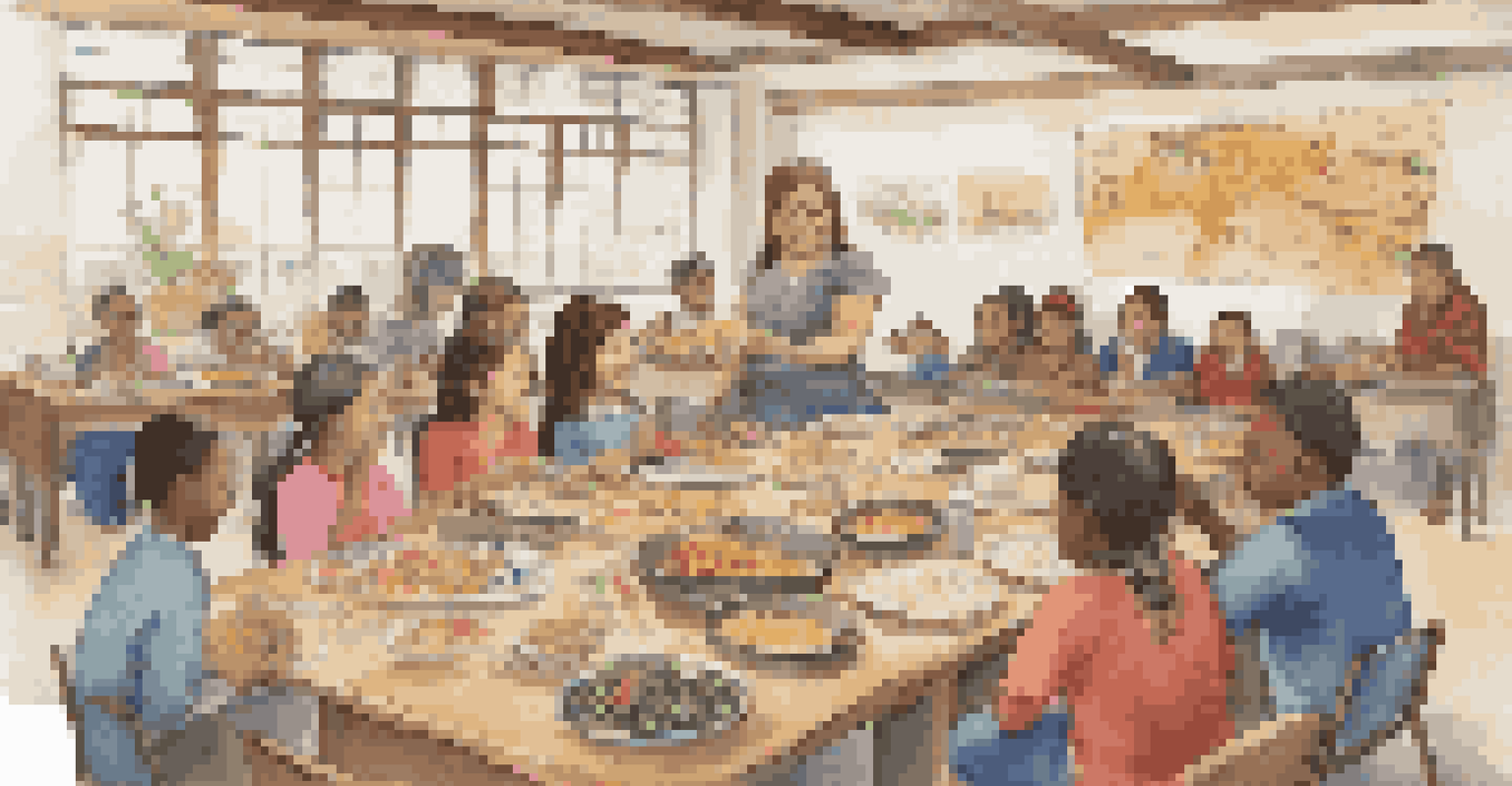Collaboration Techniques for Diverse Cultural Learning Groups

Understanding the Importance of Cultural Diversity in Learning
Cultural diversity in learning groups enriches the educational experience. Different perspectives can foster creativity and innovation, leading to more comprehensive solutions to problems. By embracing various cultural backgrounds, participants are exposed to unique approaches to learning and collaboration.
Diversity is not about how we differ. Diversity is about embracing one another's uniqueness.
Incorporating diverse viewpoints not only enhances critical thinking but also prepares learners for global citizenship. For instance, a group project involving students from different countries can lead to a deeper understanding of global issues. This collaborative environment encourages empathy and respect for differing opinions.
Ultimately, recognizing the value of cultural diversity in learning helps create a more inclusive atmosphere. This inclusivity allows all participants to feel valued, which can boost engagement and motivation in group activities. It’s crucial to establish a foundation of respect to facilitate effective collaboration.
Establishing Ground Rules for Collaboration
Creating ground rules is essential for any collaborative effort, especially in diverse groups. These rules serve as a framework that guides interaction and sets expectations for behavior. For example, agreeing to actively listen and refrain from interrupting can help maintain respect among group members.

Additionally, establishing norms around communication styles can bridge cultural gaps. Some cultures may prioritize direct communication, while others may rely on indirect cues. By discussing these differences openly, groups can reach a consensus on how to communicate effectively.
Value of Cultural Diversity in Learning
Cultural diversity enriches education by fostering creativity, critical thinking, and global citizenship among learners.
Ground rules should be revisited regularly to ensure they remain relevant and effective. Encouraging input from all members when updating these rules fosters a sense of ownership and commitment. This practice not only strengthens collaboration but also enhances mutual understanding.
Utilizing Collaborative Technologies for Enhanced Engagement
In today’s digital age, collaborative technologies play a vital role in learning groups. Tools like video conferencing, shared documents, and project management apps can facilitate communication and collaboration, regardless of geographical barriers. For instance, Google Docs allows real-time editing, letting team members contribute simultaneously.
The beauty of the world lies in the diversity of its people.
These technologies can also accommodate various learning styles and preferences. Visual learners might benefit from platforms that incorporate diagrams or charts, while auditory learners may prefer video discussions. By leveraging technology, groups can create an engaging environment tailored to diverse needs.
However, it’s important to ensure that all group members are comfortable using the chosen technologies. Providing training or resources can help bridge the digital divide. This approach not only empowers participants but also fosters a collaborative spirit that transcends cultural differences.
Encouraging Open Communication and Active Listening
Open communication is the cornerstone of effective collaboration, particularly in culturally diverse groups. Encouraging members to share their thoughts and feelings fosters an environment of trust and respect. Techniques such as round-robin sharing can ensure everyone has an equal opportunity to speak.
Active listening plays a crucial role in this process. It involves fully concentrating on what is being said rather than just passively hearing the speaker. For example, summarizing what someone has said before responding shows understanding and validation of their perspective.
Importance of Open Communication
Encouraging open communication and active listening cultivates trust and respect, enhancing collaboration in diverse groups.
Creating a culture of open communication allows for constructive feedback, which can significantly enhance group dynamics. When members feel heard, they are more likely to engage and contribute. This engagement leads to richer collaboration and more effective problem-solving.
Emphasizing Team-Building Activities to Foster Unity
Team-building activities are a fun and effective way to foster unity among diverse learners. These activities can help break down barriers and build relationships, creating a sense of belonging. Simple icebreakers, like sharing personal stories or cultural traditions, can set a positive tone for collaboration.
Moreover, engaging in activities that require teamwork can highlight the strengths of individual members. For instance, a group challenge that requires problem-solving can showcase different skills and perspectives. This not only enhances team cohesion but also builds appreciation for each member’s contributions.
Ultimately, team-building activities should be inclusive and sensitive to cultural differences. Understanding various comfort levels and preferences ensures that everyone feels included. This inclusivity strengthens group bonds and encourages collaborative efforts.
Promoting Cultural Awareness Through Shared Learning Experiences
Cultural awareness is crucial in diverse learning groups, and shared experiences can enhance this understanding. Organizing activities that celebrate different cultures, such as cultural presentations or food-sharing events, can encourage appreciation and curiosity. This not only enriches the learning experience but also fosters deeper connections among members.
Encouraging participants to share their cultural backgrounds can lead to enlightening discussions. For instance, exploring different communication styles or conflict resolution methods can provide valuable insights. These conversations help create a more cohesive learning environment by dismantling stereotypes and fostering empathy.
Need for Team-Building Activities
Team-building activities strengthen relationships and foster unity by breaking down barriers and highlighting individual strengths.
Additionally, integrating culturally relevant materials into the learning process can enhance engagement. This approach not only validates the experiences of all members but also encourages a more holistic understanding of the subject matter. Such inclusiveness is key to effective collaboration.
Assessing Collaboration and Seeking Continuous Improvement
Assessing collaboration in diverse cultural learning groups is essential for continuous improvement. Regular feedback sessions can help identify strengths and areas for growth. For example, using anonymous surveys allows members to express their thoughts candidly, providing valuable insights into the group's dynamics.
Moreover, reflecting on both successes and challenges can foster a growth mindset. Discussing what worked well and what didn’t encourages a culture of learning and adaptation. This iterative process helps the group evolve and enhances future collaboration.

Finally, celebrating achievements, no matter how small, can boost morale and motivation. Recognizing individual contributions fosters a sense of accountability and commitment to the group's goals. This positive reinforcement is vital for sustaining effective collaboration in diverse settings.